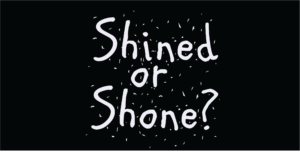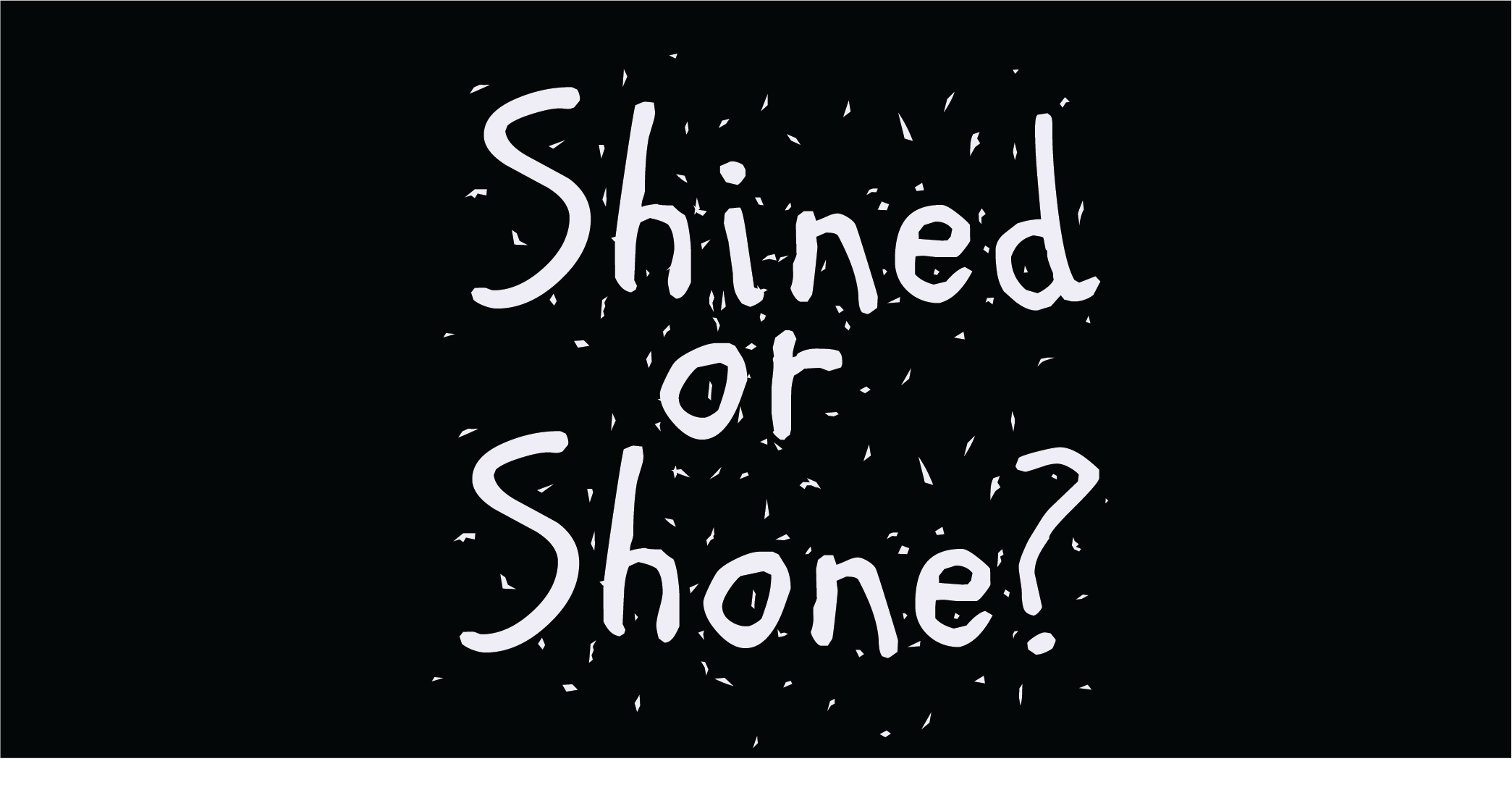Remember going to the doctor’s office and the nurse would say, “I’m going to have to give you a shot. But don’t worry. It won’t hurt.”
 This won’t hurt, but (brace yourself), you’re going to have to pay attention on this one.
This won’t hurt, but (brace yourself), you’re going to have to pay attention on this one.
(Oddly, some people do struggle to pay attention to explanations of the nuances of English grammar. (Strange, right?))
If that’s you, you’ll stay with me by keeping your eyes on the prize: You want to sound smarter, right?
Okay, then.
All we have to do is prevent you from making simple grammar mistakes.
By now you’re probably thinking, “Come on, Fairy Godmother! Get to the point: Is it shined or shone?”
Patience my pretties. It’s not that simple.
The answer is that sometimes we need to use shine, and other times we need to use shone. And in order to know when to use each, you have to understand a teensy bit of English grammar. :/
Grammar Lesson:
Let’s remember that we’re talking about a verb here. Verbs are action words.
Most style guides agree that whether to use shined or shone depends on if there is a recipient of that action.
For any aspiring grammar queens or grammar kings, “recipient of an action” is called a direct object. It is can be a simple noun, a noun phrase, or a noun clause.
You may remember from English class:
He threw the ball.
Subject = he
Verb = threw
Direct Object = ball
* The direct object answers the question “What?” In this case, it answers the question “What did he throw?”
“But Fairy Godmother, you promised not to bore us with lengthy grammar explanations!” you say.
And you’re right! In fact, all you really need to learn the difference between shined and shone is to look at a couple of examples. (Sorry! Sometimes I get carried away!)
Example 1:
He shined the flashlight under the bed to check for monsters.
In its simplest form:
He shined the flashlight.
Flashlight is the object that is shined.
So we use shined.
Example 2:
Last night, the stars shone brightly in the sky.
In its simplest form:
The stars shone.
There is no object of the verb.
So we use shone.
CAVEAT:
By definition, if you use a past tense of the verb shine to convey the act of polishing, we use shined, as in the following example:
She shined the silver vase until it sparkled.
That was easy! Right?
But remembering the difference between shined and shone can be difficult!
No worries—I got you!
HOW TO REMEMBER THE DIFFERENCE???
I have long admired Mignon Fogarty (a.k.a. @GrammarGirl), especially because she loves to share Quick and Dirty grammar tips.
Here’s her tip for remembering when to use shine and when to use shone:
Use shone when alone (no object).
If you found today’s grammar tip helpful, or know someone who would, please share! Together, we can make the world a more beautiful place by eradicating ugly grammar mistakes.
Have a question? Hit me up on Twitter: @JillBarletti.
For next week’s grammar gold, I’ll take you on a little shopping trip … who’s in?!
Like this grammar hack?
Get more sent right to your inbox!
All it takes is a name + email address ...
We pinky promise not to share your info 🙂
